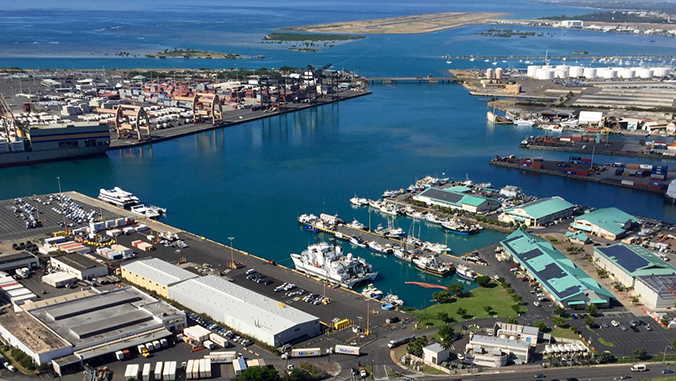
A photovoltaic (PV) battery system at the University of Hawaiʻi Marine Center has been proving its value by keeping the power on while reducing the electricity bill.
In 2018, 542 photovoltaic panels and a 210 kilowatt hour (kWh) Tesla Powerpack battery system (to store excess energy generated and discharge at low sunlight and night time hours) were installed at the center with the goal of reducing the Marine Center’s yearly electricity bill of about $75,000.
For the first month the PV and battery system has been in service, the electricity bill was $1,935.75 compared to $6,906.56 the same time last year, a decrease in energy cost of 72 percent. The system has generated approximately 243,000 kWh since it went live.
The UH Marine Center, which is responsible for coordinating operations on and maintaining the 186-foot SWATH (Small Waterplane Area Twin Hull) R/V Kilo Moana, includes pier space for the Kilo Moana, visiting research vessels, and several smaller vessels; a machine shop; cranes; and storage facilities.
During a weekday with typical building operations and low cloud cover, the PV systems and battery storage have proven to produce and store enough energy to offset the building energy consumption from 8 a.m. in the morning until 4 a.m. the following day. On a weekend with minimal building operations occurring and low cloud cover there is enough PV and battery storage capacity to continually supply the building with renewable energy.
The project, which includes data monitoring and analysis equipment and technology, was completed in collaboration with the Hawaiʻi Natural Energy Institute (HNEI). HNEI contributed approximately 35 kilowatts (kW) of the total 156 kW PV system and is designing and equipping a new laboratory at the center to conduct their research activities in renewable energy.
In addition to serving the new lab’s energy and research needs, the excess energy output from the HNEI PV system will also feed the overall UH Marine Center contributing to UH and the state of Hawaiʻi’s goal to become net zero energy by the year 2035.


